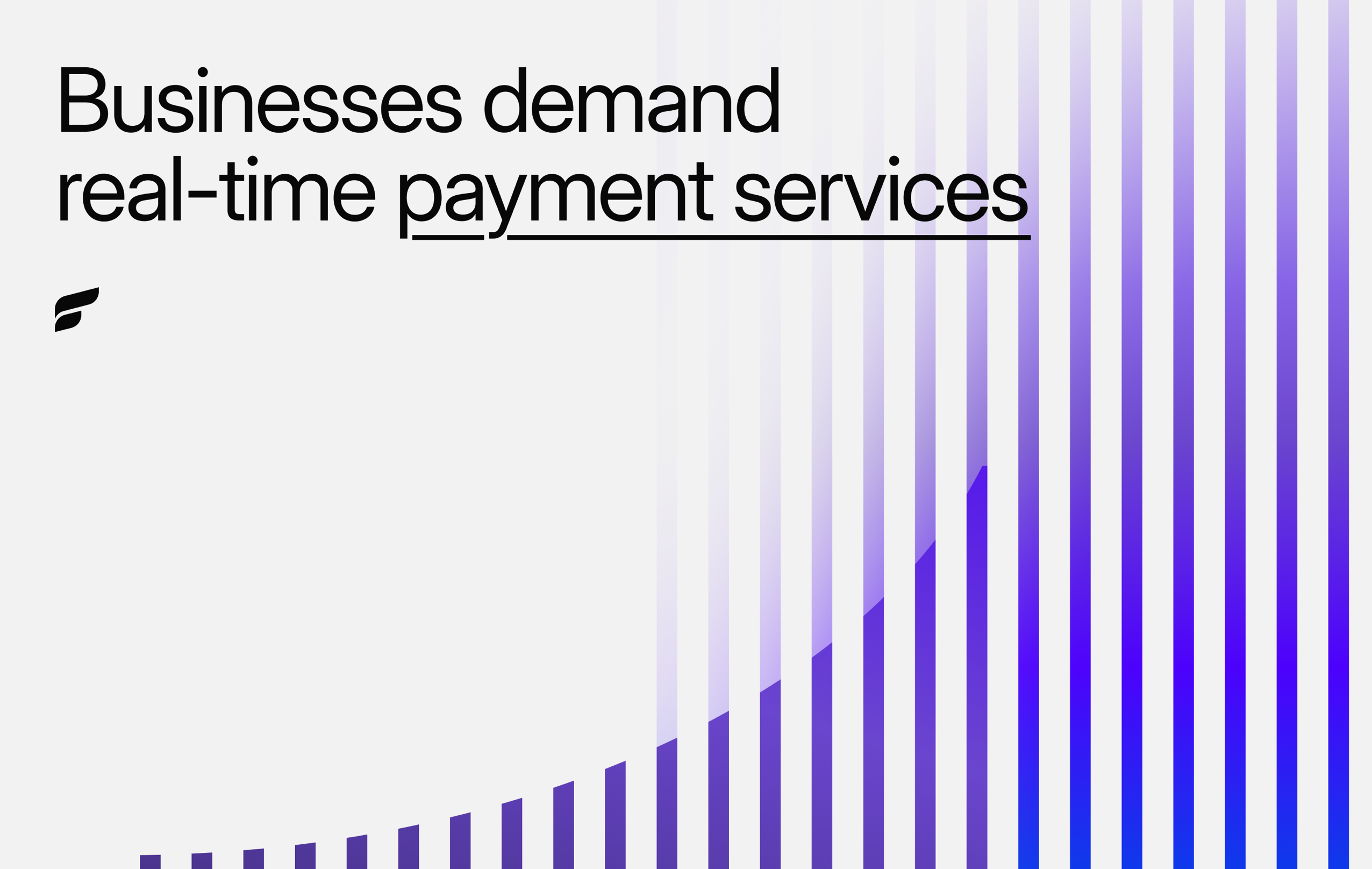
When Banks Merge, Payments Get Messy. Here’s How to Keep Them Moving.

Same-day ACH payments are becoming table stakes. Businesses demand real-time payment services. A recent Fed study [1] found a staggering 86% now leverage faster and instant payment services.
And what’s more, 74% of businesses and 79% of consumers desire instant payments from their banks. Banks should offer additional services through instant payment systems like FedNow® and RTP®, taking advantage of this valuable opportunity.
Despite this clear demand, many financial institutions are missing the mark. Datos Insights [2] reports that 90% of businesses deem instant payments essential. In response, fintech companies are introducing innovative features like Request for Payment (RFP). In doing so, they are leaving traditional banks at risk of falling behind.
FedNow launched roughly a year ago. Financial institutions are only now offering extra-value services like Request for Payments, which complement instant payment systems.
Imagine a world where you can send a payment request directly to someone via their bank account. They can respond instantly, with all the necessary data seamlessly exchanged. That’s the power of RFP.
RFP is a secure messaging system that leverages instant payment rails. By doing so, it gives billers and payees more control and flexibility over payments. RFP makes paying bills, splitting costs or managing invoices smoother and more efficient for everyone involved.
RFP represents a significant, yet often overlooked, opportunity for banks to stand apart from competitors. Many banks value overlay services for business clients, yet only 39% grasp the significant demand for RFP. [3]
This translates to missed market opportunities. Financial institutions that embrace RFP gain a clear competitive edge. Fintechs are already innovating with RFP, offering streamlined invoicing and QR-based bill payments to attract businesses.
For Banks:
Banks are under pressure from their customers to offer instant payments. Frequent complaints include the high processing costs of checks/cards, slow transactions, and the lack of payment process automation.
By offering RFP, banks can open new revenue streams and position themselves as innovative financial hubs. This broadens revenue opportunities and elevates the customer experience. Therefore, clients who have greater control over their bill payments find banking significantly more convenient and satisfying.
For Billers:
When a customer pays a biller-initiated payment request, the transaction is almost immediate, with the funds instantly available. Unlike checks, which require a waiting period to clear, billers receive payments right away.
For Businesses:
Businesses can use the instant payment system to send and receive invoices efficiently. The RFP feature allows seamless integration of instant payments into Accounts Payable and Accounts Receivable systems, automating the reconciliation process. This reduces errors and the need for handling exceptions. Business customers then benefit from streamlined payables processing by automatically uploading invoice details.
For Consumers:
Consumers can manage payment requests instantly within their banking app to avoid late fees and overdue invoices. They can easily split restaurant bills, pay rent, or reimburse friends and family with just a few taps for seamless person-to-person payments.
1. Enhance payment experiences on online/mobile banking apps
2. API Integration for Internal Applications:
3. Monetize by Offering APIs to External Partners:
By embracing RFP, financial institutions can meet the rising demands of their customers. Also, this paves the way for new revenue streams and a superior banking experience. Download our Request for Payment implementation checklist to take the first step.
Finzly’s RFP banking experience and APIs, combined with our award-winning instant payment infrastructure, empower financial institutions to fully leverage the benefits of FedNow. Contact us today to learn more.
Check out our FedNow capabilities for additional information.
[1] FEDERAL RESERVE PAYMENTS INSIGHT BRIEF: Digital wallets emerge on businesses’ radar for improved customer experience and cost efficiency
[2] Instant Payments in the U.S.: How to Seize the Opportunity: Datos Insights report
[3] Real-Time Payments: Navigating Complexity, Unlocking Value - Datos Insights Report - May 2024
